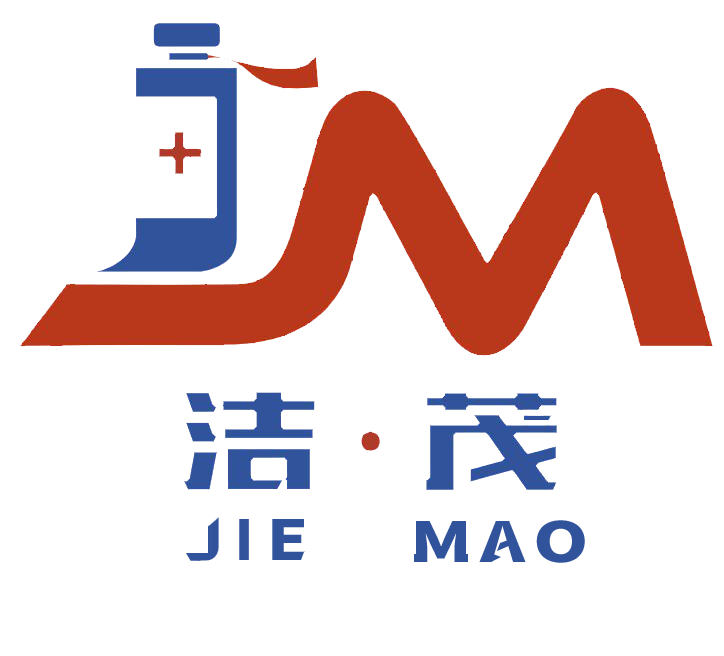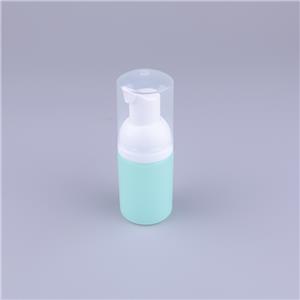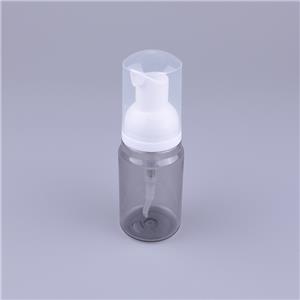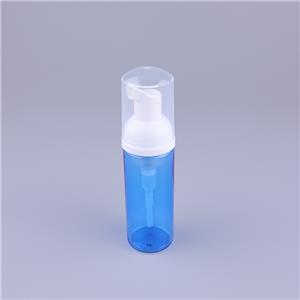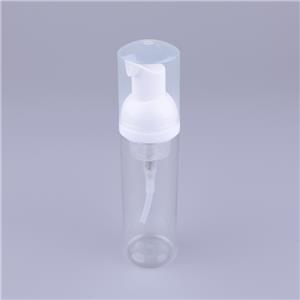- Home
- >
- News
- >
- Public Information
- >
- Polystyrene (PS)
Polystyrene (PS)
Polystyrene (PS) is a thermoplastic polymer material synthesized through the addition polymerization of styrene monomer. As one of the five general-purpose plastics, it has become an indispensable basic material in modern industry and daily life since its industrial production in the 1930s, thanks to its excellent transparency, ease of processing, and cost advantage. From transparent food packaging boxes to shockproof foam plastics, from home appliance casings to building insulation materials, PS plays a significant role in numerous fields with its unique properties, while also continuously exploring sustainable development paths in environmental protection technology innovation.
1. Molecular structure and core characteristics
The molecular structure of polystyrene is the core that determines its properties. Its repeating unit is -C₆H₅-CH-CH₂-, and the molecular chain contains rigid benzene ring side groups. This structure endows PS with a series of distinct characteristics.
In terms of mechanical properties, general-purpose polystyrene (GPPS) exhibits high rigidity and hardness, with a tensile strength reaching 30-50 MPa and a bending modulus of approximately 2800-3500 MPa. However, it lacks toughness, with an elongation at break of only 1%-3%. As a typical brittle material, it is prone to fracture upon impact. To address this shortcoming, high-impact polystyrene (HIPS), obtained through copolymerization or blending modification, introduces a rubber phase into the molecular chain, enhancing the impact strength by 3-5 times and broadening the application range of PS.
In terms of thermal properties, PS has a glass transition temperature (Tg) of approximately 80-100℃, with no distinct melting point (due to its amorphous nature). Its continuous use temperature typically ranges from 60-80℃. Beyond Tg, it gradually softens and deforms. Its thermal stability is moderate, and it is prone to degradation at high temperatures (above 250℃), releasing styrene monomer. Therefore, strict temperature control is necessary during processing. PS exhibits a high linear expansion coefficient (approximately 7×10⁻⁵/℃), and its dimensional stability is significantly influenced by temperature. This characteristic should be considered when designing precision products.
Optical performance is a prominent advantage of PS. General-purpose polystyrene (GPPS) boasts a light transmittance of 88%-92%, a haze level below 1%, and a high glossiness, second only to polymethylmethacrylate (PMMA). It enables clear display of contents, making it an ideal material for transparent packaging and optical components. This high transparency stems from its amorphous or low-crystalline molecular structure, which avoids light scattering caused by crystallization.
In terms of processing performance, PS exhibits excellent melt flowability, with a wide range of melt index (1-40g/10min). It is easy to mold through processes such as injection molding, extrusion, and foaming, with short molding cycles and high production efficiency. Its small molding shrinkage rate (0.4%-0.7%) and high dimensional accuracy make it suitable for producing precision components. Additionally, PS surfaces are easy to print, coat, and weld, allowing for secondary processing through various methods to enhance product added value.
In terms of chemical properties, PS is resistant to erosion from acid, alkali, and salt solutions, but it is easily dissolved or swelled by organic solvents such as aromatic hydrocarbons and chlorinated hydrocarbons, making it unsuitable for containing these types of chemicals. Its weather resistance is poor, and long-term exposure to sunlight can cause degradation due to ultraviolet radiation, leading to yellowing and embrittlement. UV absorbers need to be added to improve its performance.
II. Production Process and Raw Material Sources
The industrial production of polystyrene utilizes styrene as the sole monomer, and its production process is mature and stable. The core of the process involves initiating the radical polymerization of styrene through an initiator, with different polymerization methods being selected based on the type and performance requirements of the product.
The production of styrene monomer serves as the foundation of the polystyrene (PS) industry chain, primarily sourced from the petrochemical industry chain. In industry, ethylbenzene is commonly used as the raw material to produce styrene through dehydrogenation. Ethylbenzene, in turn, is produced through the alkylation of benzene and ethylene under the influence of a catalyst. Both benzene and ethylene originate from petroleum refining or natural gas processing, thus PS is essentially a fossil-based plastic. In recent years, progress has been made in the research and development of bio-based styrene, which involves the production of styrene precursors (such as phenylalanine) through biomass fermentation, followed by chemical conversion to obtain bio-based styrene. This provides a new pathway for the green production of PS, but large-scale industrial application has not yet been achieved.
The polymerization process of polystyrene mainly includes four types: bulk polymerization, suspension polymerization, emulsion polymerization, and solution polymerization. Among them, bulk polymerization and suspension polymerization are the mainstream methods in industrial production.
The bulk polymerization process is suitable for producing general-purpose polystyrene (GPPS) and high-impact polystyrene (HIPS). In this process, styrene monomer is mixed with an initiator (such as benzoyl peroxide) and gradually heated to 80-160°C in a reaction kettle, where polymerization occurs through radical polymerization. The reaction is divided into two stages: prepolymerization and postpolymerization. The prepolymerization stage is carried out at a lower temperature, with a conversion rate of 30%-50%, resulting in a high-viscosity melt. The postpolymerization stage completes the remaining polymerization reaction at a higher temperature, with a conversion rate of over 95%. The bulk polymerization product has high purity and good transparency, without the need for solvent removal, and the process is simple. However, the reaction is exothermic and concentrated, requiring strict temperature control to prevent explosive polymerization.
The suspension polymerization process is primarily utilized for the production of general-purpose polystyrene (PS) and expandable polystyrene (EPS). In this process, styrene monomer is dispersed in water to form a suspension, to which initiators and dispersants (such as polyvinyl alcohol) are added. Polymerization occurs at 80-100°C with stirring. The dispersant functions to prevent the coalescence of monomer droplets, resulting in uniform bead-like particles. Suspension polymerization is a mild and easily controllable reaction, yielding granular products that are convenient for separation, washing, and drying, making it suitable for large-scale production of general-purpose PS. By introducing a foaming agent (such as pentane) during the polymerization process, expandable polystyrene (EPS) beads can be produced.
The emulsion polymerization process is used to produce high-impact polystyrene (HIPS) or latex-type PS. It involves emulsifying styrene monomer in an aqueous phase and initiating polymerization with a water-soluble initiator (such as potassium persulfate) to form latex particles. This process has a fast reaction rate and produces products with high molecular weight. However, it requires the removal of emulsifiers and water, making the process more complex. The purity of the product is relatively low, and it is mainly used in special fields.
After the polymerization reaction is completed, the PS melt or particles are extruded and granulated into granular raw materials. For GPPS, antioxidants, lubricants, and other additives can be added during granulation; for HIPS, rubber phases (such as polybutadiene rubber) need to be introduced during the polymerization stage or granulation stage to form an "island-in-the-sea structure" through blending, with rubber particles serving as impact modifiers to absorb impact energy; for EPS, post-granulation aging treatment is required to ensure the foaming agent is evenly distributed in the particles.
During the production process, precise control of polymerization temperature, pressure, stirring rate, and initiator dosage is necessary to regulate the molecular weight and molecular weight distribution of PS, ensuring stable product performance. For example, an excessively high molecular weight can lead to decreased melt flowability and processing difficulties; whereas an excessively low molecular weight can compromise the mechanical properties of the product.
III. Classification and modification technology
Polystyrene can be divided into multiple categories based on structural and performance differences. Its performance boundaries can be further expanded through physical or chemical modification techniques to meet diverse application needs.
General-purpose polystyrene (GPPS) is the most basic variety of polystyrene (PS), which is a homopolymer with regular molecular chains and an amorphous structure. It exhibits excellent transparency and processability, but it is also highly brittle and has poor impact resistance. The intrinsic viscosity of GPPS is typically 0.6-0.8dL/g, and its melt index ranges from 5 to 20g/10min. It is mainly used to make transparent products such as food packaging containers, stationery, and lamp housings.
High-impact polystyrene (HIPS) is a blend or graft copolymer of GPPS and a rubber phase (usually polybutadiene rubber), which significantly improves impact resistance through the dispersion of rubber particles in the PS matrix. The impact strength of HIPS can reach 10-20 kJ/m², which is 3-5 times that of GPPS, but its transparency decreases (haze of 10%-30%) and rigidity slightly reduces. Depending on the rubber content (usually 5%-15%) and particle size control, HIPS can be divided into subdivided varieties such as high-impact type and high-gloss type, which are mainly used in scenarios requiring impact resistance, such as home appliance casings, toys, and automotive interiors.
Expandable polystyrene (EPS) is a PS bead containing a foaming agent. By heating, the foaming agent (such as pentane) evaporates, causing the beads to expand and form a foamed material with a closed-cell structure. EPS has an extremely low density (10-50kg/m³), excellent thermal insulation properties (thermal conductivity of 0.03-0.04W/(m・K)) and cushioning and shock absorption properties. It is an important thermal insulation and packaging material, widely used in building insulation, cold chain packaging, and cushioning packaging.
Other modified PS varieties include: reinforced PS (adding reinforcement materials such as glass fiber and carbon fiber to enhance strength and heat resistance), flame-retardant PS (adding bromine-based or halogen-free flame retardants to meet fire protection requirements), antistatic PS (adding conductive fillers to eliminate static electricity accumulation), transparent high-impact PS (modified with special rubber to balance transparency and impact resistance), and so on.
Modification technology is the key to enhancing the performance of PS, primarily encompassing chemical modification and physical modification. Chemical modification alters the molecular structure through copolymerization or grafting reactions, such as the copolymerization of styrene and acrylonitrile to produce SAN resin, thereby improving chemical resistance and rigidity. Physical modification optimizes performance through blending, filling, reinforcement, and other methods, such as blending PS with PC to enhance heat resistance and compounding with nano-clay to improve barrier properties. These modification techniques have transformed PS from a single brittle material into a series of high-performance material systems.
IV. Diverse application fields
Polystyrene, with its basic properties and diversified characteristics after modification, has achieved wide applications in many fields such as packaging, home appliances, construction, daily necessities, electronics, etc., making it an indispensable material in modern society.
The packaging field is one of the most widely applied areas of PS. GPPS, due to its good transparency and low cost, is widely used to make food packaging boxes, trays, cups, etc., which can clearly display the contents and are easily molded into various shapes. It is widely used in supermarkets, restaurants, and households. EPS, after foaming, has lightweight and cushioning properties, making it an ideal packaging material for electronic products, precision instruments, and fresh foods. It can effectively absorb shock and vibration during transportation, protecting products from damage. PS film can be made into shrink film and composite film for commodity packaging and labeling. Its good printability can enhance the aesthetics of packaging.
In the field of home appliances and electronics, HIPS is often used to make the outer shells and interior parts of large home appliances such as televisions, washing machines, and refrigerators due to its excellent impact resistance and processability, and can achieve diversified appearances through surface coating; GPPS is used to make transparent parts of home appliances, such as lampshades and display panels. In the field of electronic accessories, PS has good dimensional stability and can be used to make precision parts such as connectors, switch housings, and coil bobbins. Modified flame-retardant PS can also meet the fire protection requirements of electronic devices.
In the construction sector, EPS serves as a crucial thermal insulation material. It is cut and pasted to form insulation boards, which are utilized for the thermal insulation of building exterior walls, roofs, and floors. Its low thermal conductivity significantly reduces building energy consumption, and its lightweight nature diminishes building loads. PS boards, after being foamed or compounded, can be crafted into decorative moldings, ceilings, and partitions, offering both aesthetic appeal and durability. Furthermore, PS is also employed in the production of construction templates, drainage boards, and the like, offering exceptional cost-performance ratio.
In the field of daily necessities and toys, transparent stationery (such as rulers and folders) and tableware (such as disposable cups and meal boxes) made of GPPS are lightweight and durable; HIPS, due to its good toughness and easy coloring, is one of the main materials for toys, such as plastic building blocks and doll shells, and its safe and non-toxic properties (food-grade HIPS) make it suitable for children's use. PS is also used to make daily necessities such as combs, toothbrush handles, and clothes hangers, which are low cost and easy to mass produce.
In other fields, PS is used in the medical field to make disposable syringe casings, petri dishes, medical packaging, etc., requiring medical-grade PS (non-toxic, low leachables); in the optical field, optical components such as lenses and prisms made from GPPS have sufficient light transmittance to meet mid-to-low-end requirements; in the automotive field, HIPS is used to make interior parts (such as instrument panels and door panels), and modified PS can also be used to make exterior small parts; in the 3D printing field, PS wire can be used to print complex models through SLS technology, achieving high precision and low cost.
V. Environmental Protection and Development Trends
The environmental friendliness of polystyrene has long been a subject of concern. Despite facing the challenge of "white pollution" caused by its difficulty in degradation, it is gradually moving towards sustainable development through recycling, technological innovation, and green transformation.
The environmental issues of polystyrene (PS) primarily stem from its non-biodegradability. If discarded carelessly, waste PS products can persist in the environment for extended periods. This is especially true for expanded polystyrene (EPS) foam, which is bulky and lightweight, easily dispersing with the wind, causing visual pollution and ecological harm. Furthermore, when PS is incinerated, harmful substances (such as benzene derivatives) are released, necessitating energy recovery in specialized incineration facilities.
Recycling is the core approach to addressing environmental issues related to PS. Currently, there are mainly three methods: physical recycling, chemical recycling, and energy recovery. Physical recycling involves sorting, cleaning, crushing, and melting granulation of waste PS to produce recycled PS. Recycled GPPS can be used to make packaging accessories, daily use product shells, etc.; recycled HIPS can be used to produce low-grade plastic products such as trash cans and plastic stools. Chemical recycling decomposes PS into styrene monomers through pyrolysis or catalytic depolymerization, which are then reused in polymerization production to achieve a closed-loop cycle. This technology can handle heavily polluted or complex PS waste materials, and the purity of the recycled monomers is high, but the cost is relatively high. Energy recovery involves incinerating unrecyclable PS waste materials to generate electricity or heat, achieving energy reuse. It requires supporting environmental protection facilities to control pollution.
To reduce environmental impact at its source, the research and development of bio-based PS has been accelerated. By producing styrene monomer from biomass raw materials, the dependence on fossil resources is reduced, and the carbon emissions of bio-based PS during its lifecycle are reduced by more than 30% compared to traditional PS. Meanwhile, progress has been made in the exploration of degradable PS. By adding degradable components such as starch and cellulose to PS, or introducing hydrolyzable groups, PS can gradually degrade in specific environments (such as composting conditions).
Policy promotion is crucial for the environmentally friendly development of polystyrene (PS). Countries around the world have implemented "plastic limit orders" and "plastic ban orders" to restrict the use of disposable PS products, such as banning non-degradable PS lunch boxes. At the same time, they have improved the recycling system and increased the recycling rate through subsidies, legislation, and other means. The European Union requires that the PS recycling rate reach over 70% by 2030.
The future development trend of PS focuses on three directions: high-performance, improving the heat resistance, weather resistance, and mechanical properties of PS through precise modification, such as developing long-life PS building materials and weather-resistant PS packaging; greening, promoting the industrialization of bio-based raw materials and chemical recycling to reduce the environmental footprint and develop degradable PS varieties; and functionalization, expanding the application of PS in high-end fields, such as antibacterial PS for medical packaging, high-barrier PS for food preservation, and intelligent responsive PS (such as temperature-sensitive color change) for anti-counterfeiting packaging.
Polystyrene, as a classic and versatile plastic, embodies the close integration of material science and social needs in its development journey. From basic packaging to high-end products, PS supports the development of numerous industries with its cost-effective advantages. Facing environmental challenges, through technological innovation and system construction, PS is transitioning from a traditional fossil-based plastic to a green and recyclable material system, continuing to play an important role in sustainable development.
